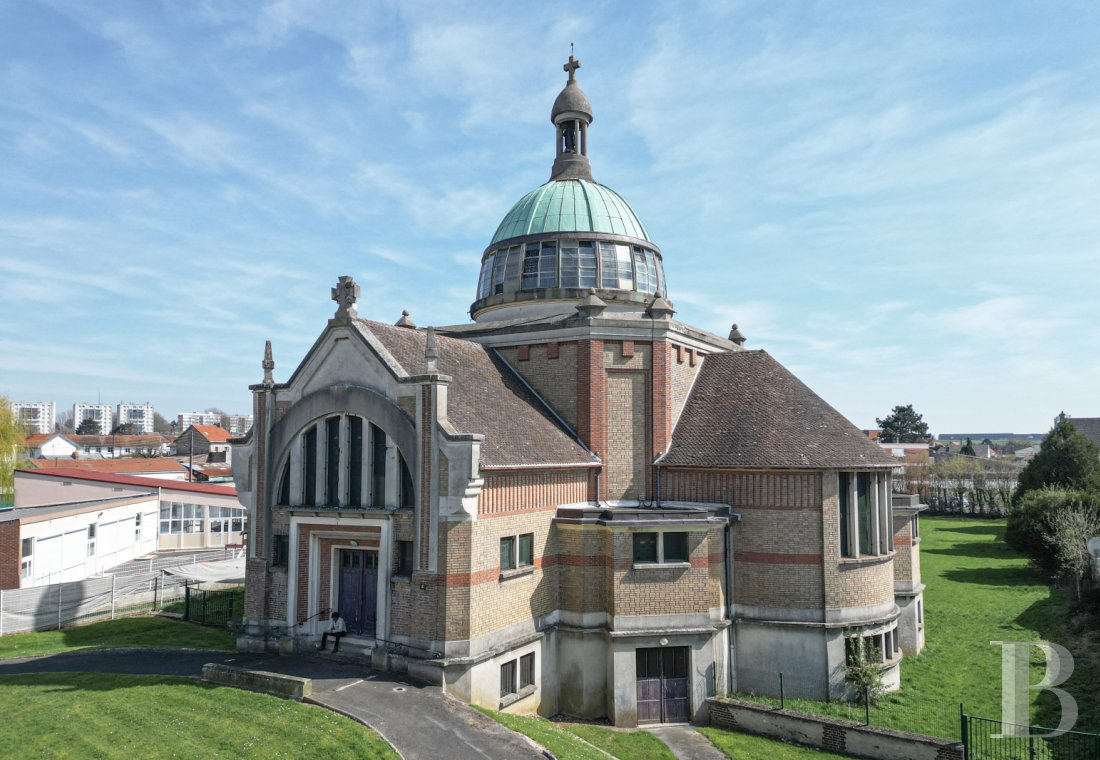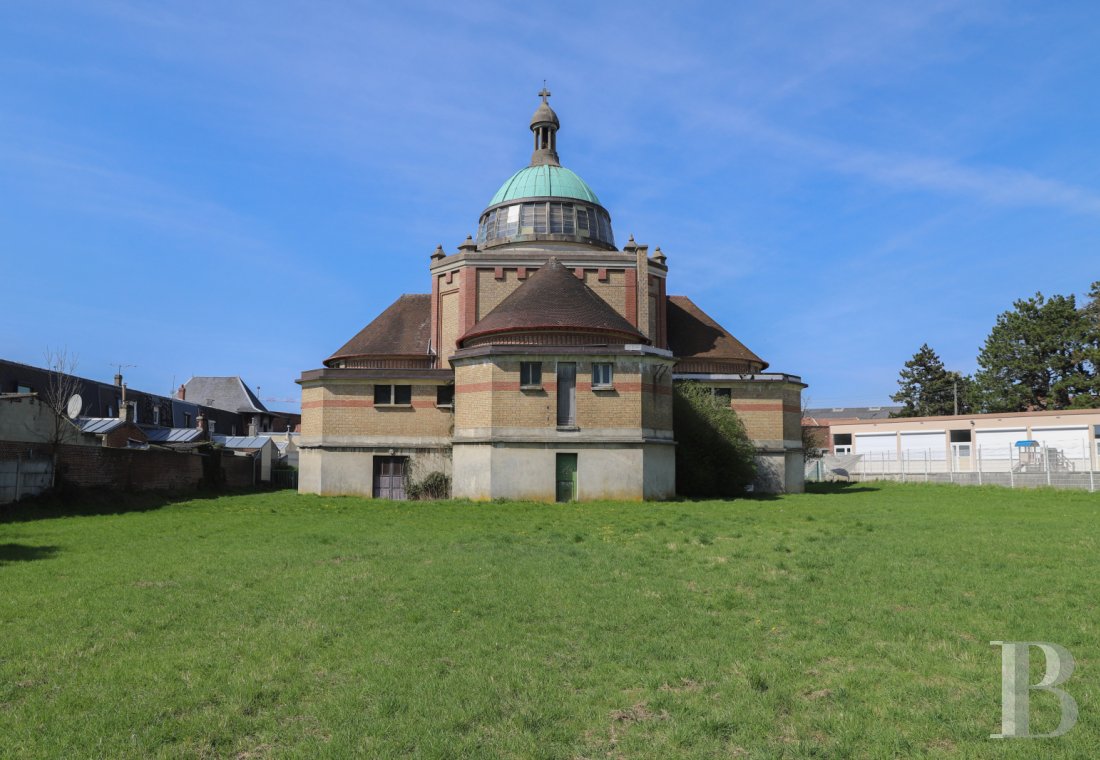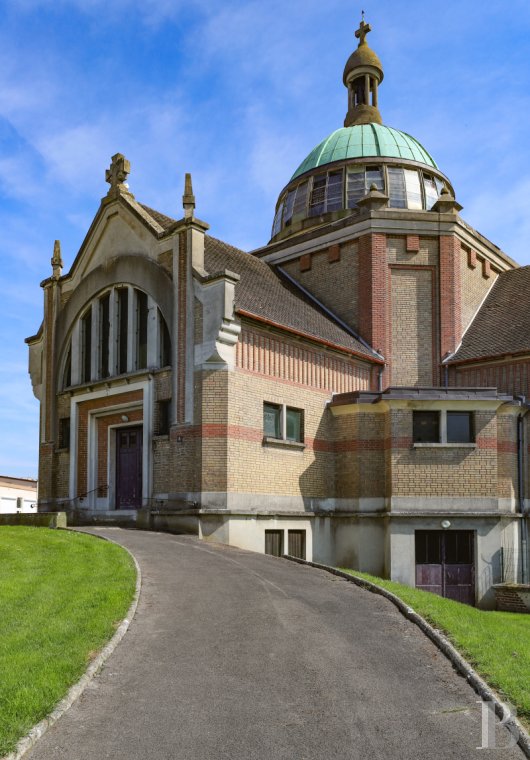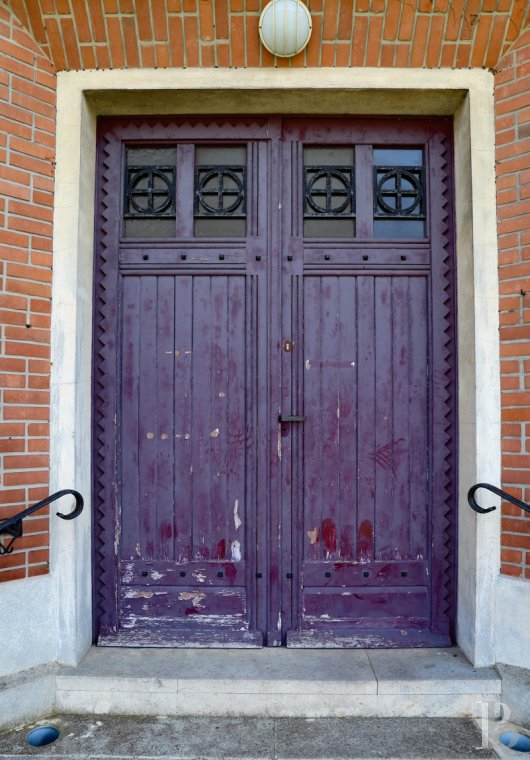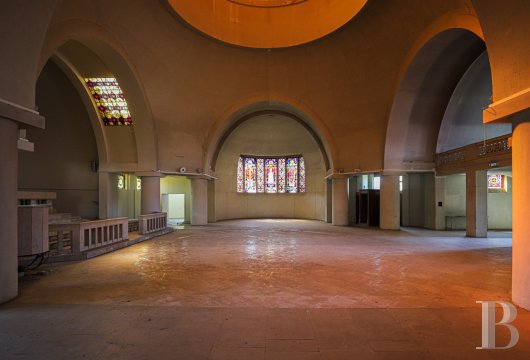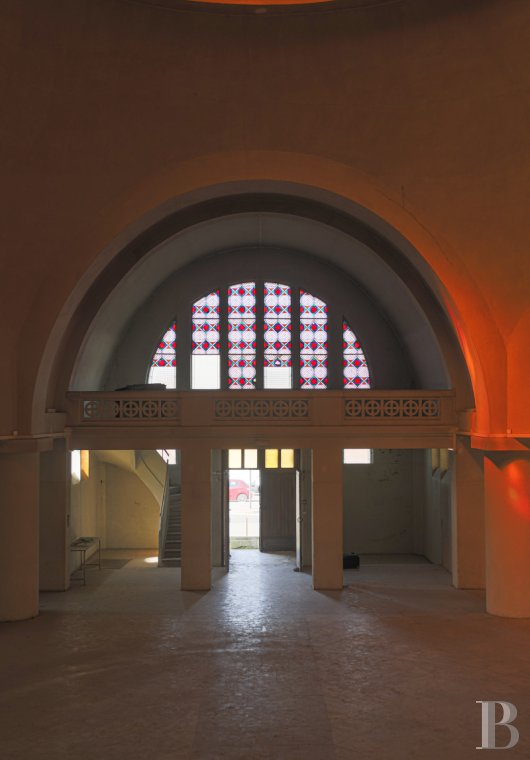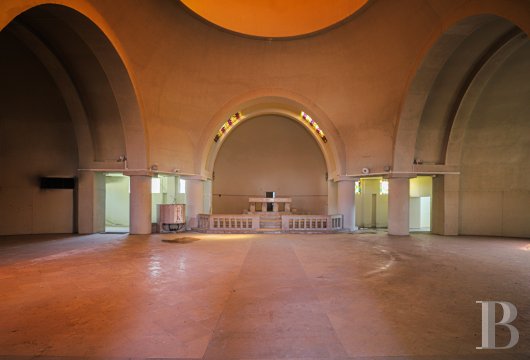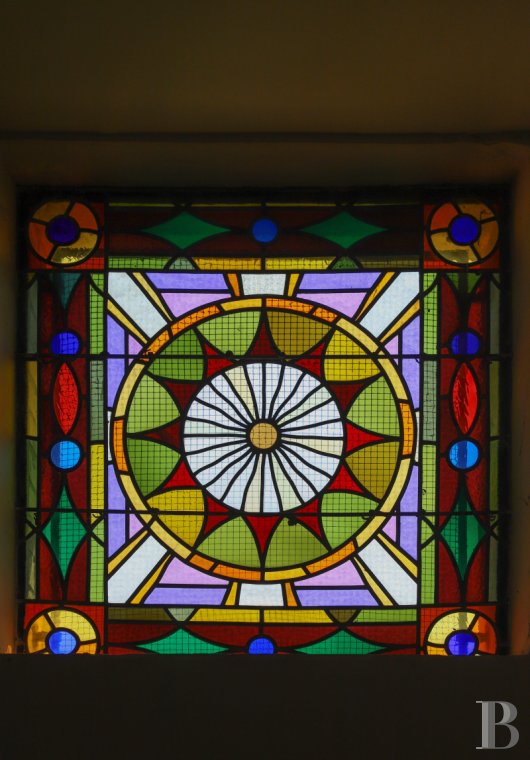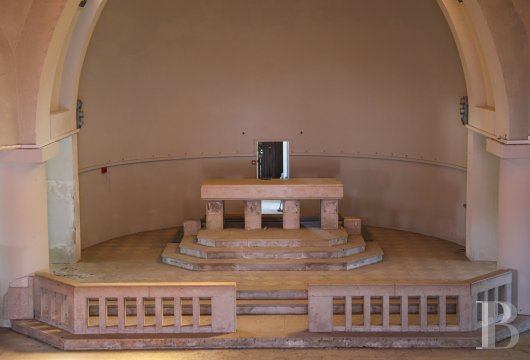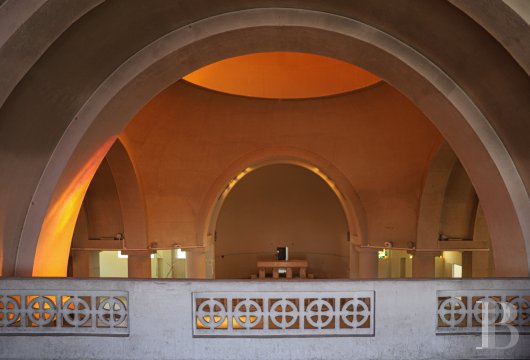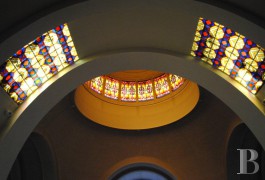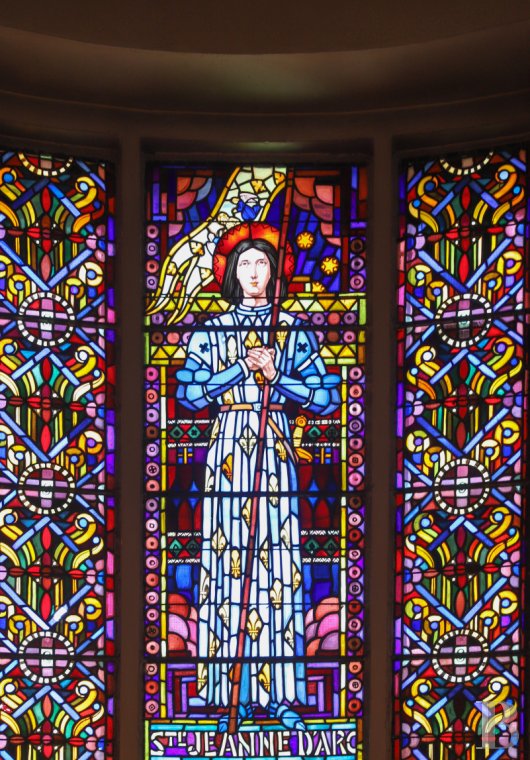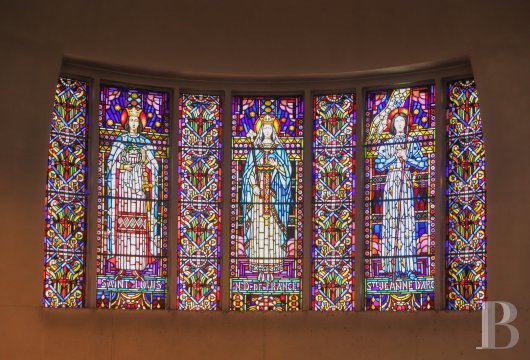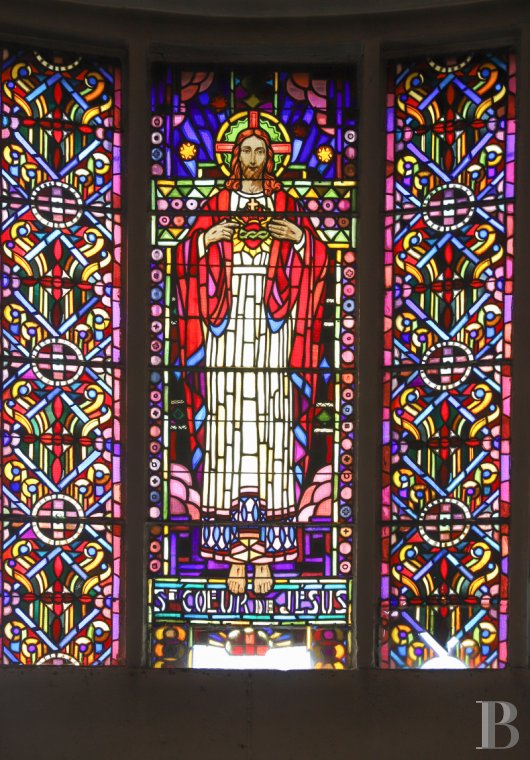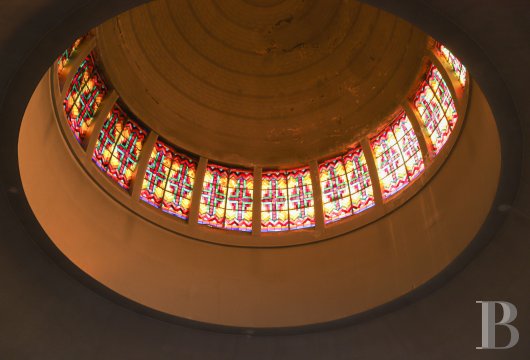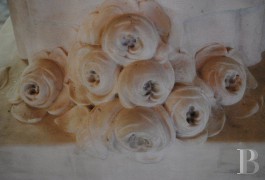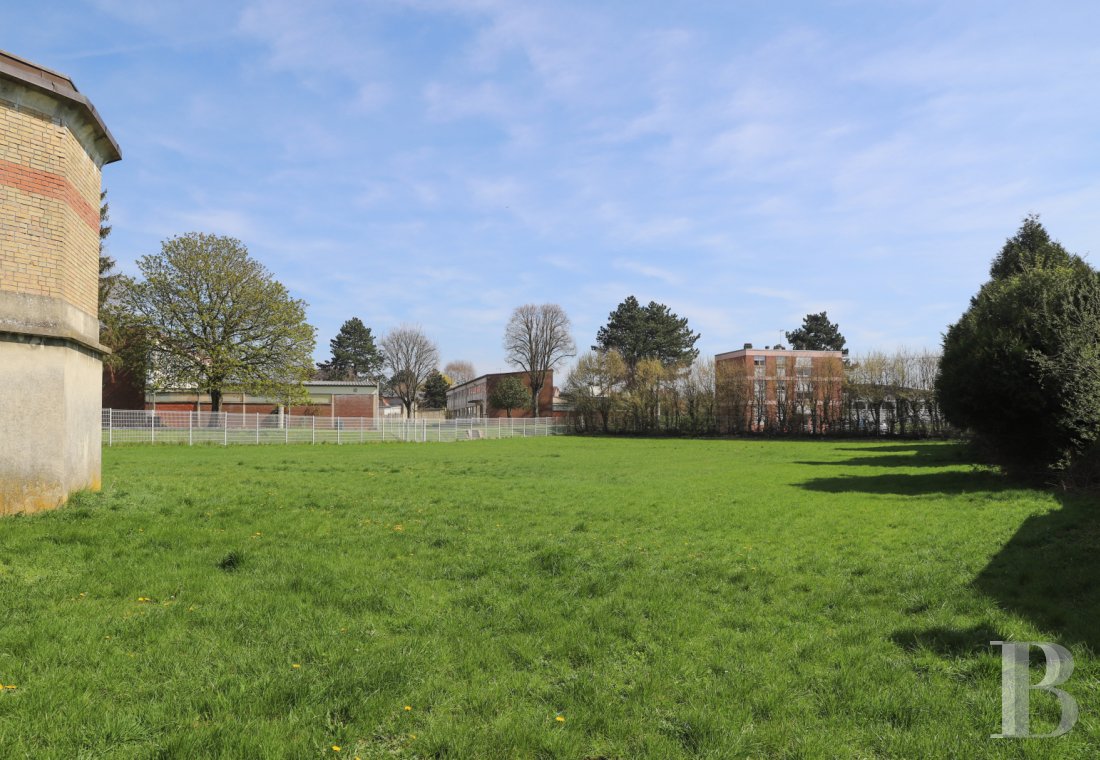in France’s Picardy region, two hours from Paris

Location
This church lies in the outskirts of a large town in Picardy, in a district that is undergoing change. This urban location is handy as shops and public amenities are nearby. Yet the church enjoys calm surroundings. The property is in a central position in relation to European capitals and big cities. By car, Paris and Brussels are two hours away, London four and a half hours away, Luxembourg three hours away and Cologne three and a half hours away. A train station lies five minutes from the church by car and fifteen minutes away on foot.
Description
For the new church, the clergy called upon the architect Narcisse Laurent, who handed over his monumental work in 1937. The decision was made to build the church on a vast plot of land. A military aerial view taken in November 1918 shows that this plot of land was in the heart of a fighting zone beside a German trench at the gates of the town. At the time, the public saw a powerful symbol in this new construction: a church built on a war trench to heal the wounds of a tragic conflict.
The church
The church is built in a Roman-Byzantine art deco style. It has a dome, supported by eight pillars, and two levels: the actual church on one floor and a lower floor below it that contains rooms for everyday life. With the transept’s rounded shape, roughly five hundred people can comfortably attend Mass in this monument. Most churches from the period of reconstruction that followed the First World War kept a Latin cross shape. But this one is an exception with a polylobed plan in a Greek cross in which ‘you can see the altar and pulpit from everywhere’ (extract from a brochure from around 1936 presenting the church). From the road, a curved path leads up to the main entrance: a wooden double door. Directly above this entrance door, a monumental arch with tall stained-glass windows gives the church a grand, solemn appearance.
The feature that immediately stands out when you first look at the church is its tall dome where the transept crosses the nave. The dome’s base is ten metres above the floor and it rises up to a pinnacle eighteen metres above the floor. A lantern caps the dome. This lantern contains a statue of the Christ child and it is crowned with a cross. The building’s shell of reinforced concrete cannot be seen, except in the door and window surrounds and around the dome and its pinnacle. The walls are made of yellow bricks in a Flemish bond. Red bricks are used for emphasis on the corners, entablatures and a frieze that runs around the monument. The apses (side chapels, chancel and galleried narthex) are vaulted with reinforced concrete, concealed outside by rounded hip roofs of flat tiles. An unbroken band of stained-glass windows runs around the dome’s lower section, letting in natural light. A protective layer of transparent glazing is placed outside this strip of colourful windows. The dome’s upper section is made of copper that has greened over time. The initial plan included a church tower rising up at the back of the edifice, unaligned with the chancel. This can be seen in a watercolour plan and in architectural plans for the planning permission document dating back to March 1933. But this tower was never built due to a lack of funds.
Inside the church, the walls are smooth and all painted white. They are made of concrete and plastered brickwork. The eight thick columns on which the dome rests are prominent. Plainness characterises the interior. Its harmony is perfect. Subdued, multicoloured light enters the church through elegant stained-glass windows, both around the sides and up in the dome. A vast gallery made for singers and musicians extends above the narthex. Everything is turned towards the altar, which brought the clergy closer to the churchgoers when the monument was built.
A crypt lies beneath the church. It is a large room that extends under the entire building and that used to host parish meetings. Behind the edifice is a large plot of land that was used as a garden for children of the church youth club. In the 1930s, there was a plan to build a presbytery on this land, but this plan was never brought to fruition.
Regarding decoration, the interior is very plain. Beyond the stained-glass windows, there is no decoration at all: neither mosaics nor frescoes. The floor is covered with plain square tiles and stoneware fragments on the sides. The columns, vaulted ceilings and walls are smooth and painted white. The only ornaments were on the chancel railings, the marble altar and the pulpit. This striking plainness makes the church stand out from churches that were rebuilt in the previous decade, where there are plenty of sculptures, bas-reliefs and stylised plant patterns. Such plainness gives this church a more elegant edge.
The art deco stained-glass windows are the only decorative features inside the church, which brings them out even more. The two apses that make up the side chapels include illustrated stained-glass windows. On one side, we can see Saint Louis, the Virgin Mary and Joan of Arc. On the other side, we can see Jesus Christ, Saint Quentin and Saint Eligius – the parish’s patron saint. Between each of these six stained-glass windows stand eight others that are all designed with the same pattern of Greek crosses and stylised plant patterns.
The stained-glass windows in the chancel (two stained-glass windows in its vaulted ceiling), the narthex (six square stained-glass windows) and the gallery (six stained-glass windows forming a semi-circle) are embellished with geometric patterns.
Lastly, the dome includes sixteen two-metre-tall stained-glass windows that are eleven metres above the floor. They form a remarkable unbroken band of thirty-two stylised crosses.
In the lower floor, many rooms let in natural light, which makes them suited to a range of meetings or workshops.
(Historical and architectural sources: Frédéric Pillet, December 2021)
The garden
The garden surrounds the monument. It is mostly made up of a vast lawn. Large vehicles can enter the grounds via a rear entrance.
Our opinion
This bold architectural project was one final act of courage following a terrible conflict: it helped rebuild a town in the wake of the First World War. The church’s style – Roman-Byzantine art deco – is of great value: a token of its era and one that should be carefully preserved. The property recently became a listed historical monument. This status underlines its true worth.
An interesting combination makes this church stand out: the modern traits of its facade and dome appear next to traditional roofing of flat tiles. The latter reflects the local region’s architecture, as does the brickwork. Yet its interior is just as striking: a vast, elegant space that would be ideal for the arts and events.
250 000 €
Fees at the Vendor’s expense
Reference 765494
| Land registry surface area | 4930 m2 |
| Main building surface area | 950 m2 |
| Number of bedrooms | 1 |
NB: The above information is not only the result of our visit to the property; it is also based on information provided by the current owner. It is by no means comprehensive or strictly accurate especially where surface areas and construction dates are concerned. We cannot, therefore, be held liable for any misrepresentation.

